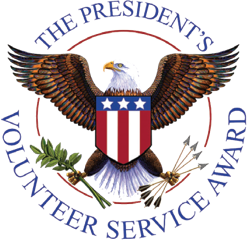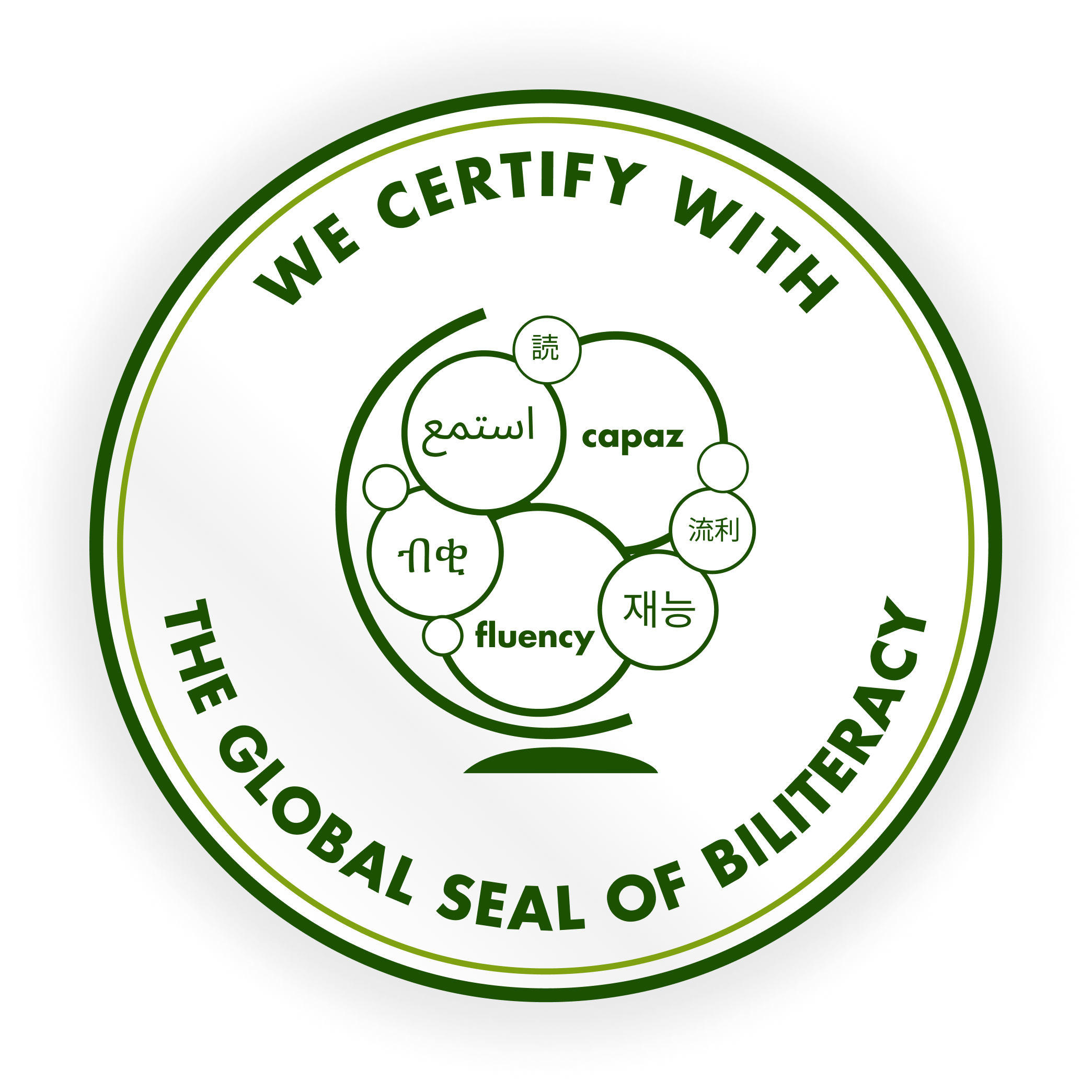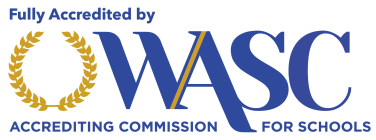History and Today 安华的历史与今天
.pptx.jpg)
(updated 9/5/2023)
Ann-Hua Chinese School History
From the article written by Cheng Yunhui in 2023
Nestled beside the Huron River in the vibrant city of Ann Arbor, Michigan – home to the prestigious University of Michigan – Ann-Hua Chinese School stands as the most influential Chinese language institution in Michigan today with nearly 40 teachers, 29 Chinese classes, and over 400 students. Since its establishment in 1993, Ann-Hua has undergone several phases of development: from its early development (1993-1996) to its expansion (1996-2002) and steady progress (2002-2017), before entering a transformative change in 2018. As we celebrate Ann-Hua’s journey, we celebrate its commitment to preserving Chinese culture and its enduring role in fostering cultural exchange.
The Early Years (1993-1996)
On June 12th, 1993, under the initiative of Mr. Lianggen Zheng and Ms. Lin Xia, eight Chinese families gathered along the Huron River at Gallup Park in Ann Arbor to discuss their children’s education regarding learning Chinese. They mutually expressed their wishes for their children to learn simplified Chinese characters and Pinyin, eventually agreeing to establish a Chinese school. Given the situation at the time and their aspirations for the future, they decided to organize their children and nearby families' children into the first Chinese class during summer break in 1993. This class, held on June 27, 1993, at the University of Michigan’s North Campus, began with 15 students and Ms. Lin Xia as the first teacher. By the end of July of that year, the school had grown to 39 students, divided into three classes. At this time, the school’s direction was clearer, and Ann-Hua Chinese School (the school name was proposed by parent He Xueli and means "Ann Arbor Chinese School") was officially established in September 1993 and registered with the Michigan state government on October 21, 1993.
Despite its modest start, the school laid important foundations, drafting several documents on preliminary bylaws – the Student Code of Conduct, Parents' Guide, and Trial Rules for Tuition Management – and forming various departments with specific responsibilities. Additionally, Mr. Zheng Lianggen was appointed the first principal, while Mr. Xiang Jianming served as vice principal. Other key figures included Mr. Zhao Shanyang (external liaison), Mr. Chen Yifang, and Ms. Li Lina (finance managers). These early days also saw the launch of the school’s first newsletter – which would later evolve into the vibrant publication we know today as Ann-Hua Tian Di – including school notices, activities for students and parents, student compositions, and other content. In 1996, the school finalized its first official set of bylaws that defined its nature, organizational structure, and management methods.
Expansion and Community Engagement (1996-2002)
As Ann-Hua Chinese School grew, so too did the demand for space and resources. Hence, in 1996, the school opened a second branch, Kaitong, in eastern Ann Arbor, which would later become the independent Kaitong Chinese School and eventually evolve into the New Century Chinese School in 2002. A major milestone also came in 2001 when high school students studying Chinese at Ann-Hua were able to earn academic credit through the Community Resources Program, officially integrating Ann-Hua’s education into the American public school system.
During this period, Ann-Hua Chinese School transformed from a language school into a broader community organization, emphasizing charitable efforts and community service. Under the leadership of Director Cao Liqun, the school joined the Rainbow Plan initiative in 1998, a project organized by the Overseas Chinese Affairs Office of China and the Chinese School Association in the United States (CSAUS), raising funds and doing other charity work to support impoverished students in mainland China. In addition, the school achieved its non-profit 501(c)(3) status in 2001 with the help of Ms. Zhang Yuqing, allowing for more streamlined operations and enhanced fundraising opportunities.
Steady Growth and Institutional Development (2002-2017)
The years between 2002 and 2017 marked a period of steady progress, though not without its challenges. With increasing student enrollment, the school faced a shortage of classrooms. Ann-Hua held classes at various locations before settling at Washtenaw Community College, the school’s long-term home.
In 2002, Board Member Jiang Tao helped the school create its own Classroom Construction Fund through the United Way, and during the school’s 2006 Chinese New Year Gala, Dr. Jiang Tao expressed his dream of Ann-Hua owning its own building. Since then, the Ann-Hua community has been striving to make this dream a reality.
During this time, the school’s organizational structure matured. In 2006, the school expanded its committee to 16 members, creating new leadership roles to oversee academic affairs, administration, finance, and external relations. In 2009, the school also established the Ann-Hua Activity Center to lead and organize community activities that serve the needs of the local Chinese community. Mr. Li Songnian was appointed as the first director of the Ann-Hua Activity Center. In 2009, Ann-Hua Chinese School also made significant revisions to its bylaws.
In 2002, the school started offering new programs, such as SAT writing and mathematics classes, with Mr. Matthew Perry as the first writing teacher and Mr. Yibo Ling as the first mathematics teacher. Similarly, in 2003, Ann-Hua began offering Chinese as a Second Language (CSL) courses, with Ms. Da Wei as the first teacher, further diversifying the school’s educational offerings. The school also continued strengthening its Chinese language education, beginning to use both textbooks from Jinan University and Molly Lee, broadening its approach to education.
Additionally, in 2005, the school’s newsletter, led by teacher Qiu Shanping, was renamed Ann-Hua News, in which older students interviewed the community and wrote articles for the monthly publication. In 2010, the newsletter was further renamed Ann-Hua Tian Di, which published 3 releases a year under the guidance of Mr. Jiang Jiang. In the same year, the school introduced its first yearbook under the work of Board Member Yang Jing. Moreover, in 2013, Board Member Zhang Hao composed the school’s anthem, "I Love Ann-Hua."
As the school’s internal systems expanded, so did its technological infrastructure. In 2002, Ann-Hua Chinese School began to use the online registration system recommended by CSAMI, marking the beginning of Ann-Hua Chinese School's shift from manual registration to electronic registration management. This online registration system was redesigned several times, first in 2004 by Mr. Li Jinan and then in 2011 by Mr. Pang Xiong.
During its period of steady progress, Ann-Hua Chinese School continued its community service efforts in mainland China. In 2002, Ms. Zhong Suzhuang, Mr. Wang Wei, Ms. Chu Mengdan, Ms. Wu Qi, Ms. Pei Ying, Ms. Huang Zheng, and Ms. Chen Xiaohong took over the leadership of the Rainbow Project from Mr. Cao Liqun. During the 2003 SARS outbreak, Ann-Hua Chinese School raised over $30,000 in donations to be sent through the Chinese Red Cross to support patient rescue efforts in China. Furthermore, in 2008, during the Sichuan earthquake, Ann-Hua donated over $70,000, of which a portion was sent to the Chinese Red Cross for disaster relief and reconstruction, while the remaining portion was used to rebuild Yuantong Primary School and Longxing Middle School in Chongzhou City that had been severely damaged in the earthquake. In the same year, Ann-Hua Chinese School and the Rainbow Team directly donated funds through the Sichuan Women's Federation to support 100 impoverished primary school children in Xiaojin County, Sichuan. The Rainbow Team also organized its first visit to Moxi High School in Luding County, Ganzi Tibetan Autonomous Prefecture, Sichuan Province, in 2010, where the team stayed for a week and lived with the students they had supported. Finally, in the winter of 2015, Board Member Yang Qian led a team to organize the first Ann-Hua Rainbow Food Day event, where volunteers coordinated every detail of the event, ensuring its success and creating a new fundraising channel for the Rainbow Project.
A New Era of Transformation (2018-2025)
In 2018, Ann-Hua entered a transformative phase with the Ann-Hua Structural Reform Plan proposed by the school’s leadership team. This comprehensive strategy redefined the school's organizational framework, separating the executive and school committees and introducing new departments focused on education and community service. The school also sought professional management training to refine its leadership processes and prepare for future growth through The New Company, which provided management training to the Ann-Hua Board of Directors and management team.
A major milestone came on November 27, 2019, when Ann-Hua purchased its first permanent property at 3250 Plymouth Road, marking the school’s establishment in a stable, dedicated space for the first time in its history. That same year, discussions were initiated for the return of Canton Chinese School to Ann-Hua, culminating in a formal agreement signed by Zhang Xingyu – the CEO of Canton Chinese School – and Canton Chinese School’s principal Rong Chuanbing in February 2021.
Additionally, the formation of the second Executive Committee and the new School Committee in 2020 officially launched the accreditation process for Ann-Hua Chinese School. The new CEO, Mr. Zhang Xingyu, a long-term member of Ann-Hua Chinese School and advocate for Chinese education, nominated Dr. Chen Lingzhi to serve as the Ann-Hua Chinese School Principal and Accreditation Committee Director. This effort was part of the school’s larger goal of “three modernizations” – regularization, standardization, and professionalization – that were to be completed within 3-5 years. At the same time, the Ann-Hua Board of Directors established a Policy Development Committee, with committee leaders and heads of various functional departments beginning to organize and revise necessary documents such as new regulations, procedures, and rules. After two years of comprehensive reviews and revisions, Ann-Hua successfully achieved accreditation by the Western Association of Schools and Colleges on June 25, 2022, fully recognizing Ann-Hua’s K-Adult Chinese language programs, cultural programs, and STEM projects in mathematics and technology and affirming the school’s high standards in language education and cultural programs.
Community Contributions and Celebrating 30 Years
As Ann-Hua continues to grow and evolve, it remains deeply rooted in the community, guiding local Chinese residents to integrate into the diverse society of the U.S. and contributing to multicultural exchanges. Since 2013, Ann-Hua Chinese School has participated in the annual Independence Day parade in Ann Arbor every July 4th. Additionally, since 2018, the school has collaborated with the largest local shopping center, Briarwood Mall, to provide gift-wrapping services for customers on Christmas Eve and send heartfelt holiday wishes while raising funds for charitable organizations. Every Chinese New Year, Ann-Hua Chinese School also celebrates with locals at Briarwood Mall, hosting dragon dances, lion dances, waist drum performances, Yangko dances, and over 20 other Chinese cultural performances. Other activities such as paper cutting, making window grilles, writing Spring Festival couplets, and practicing calligraphy are also held at these events.
The school’s ability to organize such high-quality performances is closely linked to the active participation and support of its various communities. To attract and encourage more communities to join Ann-Hua, the Ann-Hua Demonstration Fund Committee has been enthusiastically supporting various clubs and societies over the years, helping them find rental spaces for events and providing financial support. In recent years, the committee has funded over 20 societies, including the Ann-Hua Waist Drum Team, Ann-Hua Choir, Ann-Hua Tai Chi Class, Ann-Hua Martial Arts Team, Ann-Hua Dragon and Lion Dance Team, Ann-Hua Traditional Chinese Painting Exhibition, and the Ann-Hua Student Union, which has greatly enriched and developed cultural activities within the Ann-Hua community.
Ann-Hua Chinese School has also been actively involved in charity work within other local communities. For instance, Flint’s Doyle-Ryder Elementary School has faced significant challenges due to the suspension of government subsidies. After learning about these difficulties, Ann-Hua has organized annual fundraising efforts for the school every year before Thanksgiving since 2018.
Ann-Hua and the Chinese School Association in the United States (CSAUS)
As a member school of the CSAUS, Ann-Hua Chinese School has been actively involved in various initiatives and activities organized by the CSAUS from its inception to the present day. In 1994, Ann-Hua Chinese School became one of the original sixteen-member schools that participated in the CSAUS's founding. Mr. Zheng Lianggen, the first principal of Ann-Hua Chinese School, played a key role in assisting the organizing committee with hosting the CSAUS's first election. In October 1995, Chairman Zhao Shanyang and Principal Ye Qizhuang represented Ann-Hua at the CSAUS's inaugural biennial conference in Columbus, Ohio. In the following years, Mr. Zheng Lianggen, Mr. Yan Ciqing, Mr. Zhang Xingyu, and Mr. Jiang Jiang were elected as directors and presidents of the CSAUS. In 2023, Ms. Li Zhu was also elected as a director of the 15th Board of Directors. Over the years, the Ann-Hua Chinese School Board of Directors, along with many current members of the school committee – including Chen Lingzhi – have supported the CSAUS's efforts through various roles, including serving as officers who take on specific responsibilities for the CSAUS's initiatives. In recent years, Principal Chen Lingzhi and Vice Principal Wang Xiaoling have also contributed to the promotion of the Chinese proficiency exams, including the Chinese Test, Global Bilingual Seal, and corresponding assessments organized by the CSAUS's Assessment Center. Since 2022, Mr. Cheng Yunhui, a member of the school committee, has been actively involved in submitting articles for the CSAUS's journal and has served as the deputy editor-in-chief of the journal since 2023. These behind-the-scenes efforts by individuals like Mr. Cheng, Principal Chen, Vice Principal Wang, and others have played a crucial role in ensuring the successful execution of the CSAUS's various programs and activities.
On December 16, 2023, Ann-Hua Chinese School celebrated its 30th anniversary in a grand ceremony at the WCC auditorium. The ceremony was hosted by Ms. Liao Sheng, a dedicated volunteer at Ann-Hua. The event was graced by a number of distinguished guests:
- Catherine McClary, Treasurer of Washtenaw County
- Ché Carter (MA), former Principal of Huron High School
- Deano Smith (PhD), Principal of Greenhills School
- Chen Yan, President of the University of Michigan Chinese Professors Association
- Qiu Jiming, Treasurer of the 14th CSAUS Council
- Zheng Lianggen, the 4th President of Ann-Hua Chinese School
- He Zhenyu, the 5th President of Ann-Hua Chinese School
- Tang Nianfa, the 8th President of Ann-Hua Chinese School
- Wu Tianshu, Director of the Dallas Contact Center of the CSAUS
- Li Bo, Director of the Cleveland Regional Contact Center
- Zhang Xingyu, President of the Michigan Chinese Schools Association
- Zhang Xian Gang, Principal of Greater Detroit Chinese School
- Xie Luo, Principal of New Century Chinese School
- Miao Xinran, Director of the Rainbow Project
- Teng Yanjiang, Principal of Sparta Chinese School
- Li Xia, Minister of External Relations and Publicity
- Liu Yuchuan, Principal of Beitang Chinese School
In addition, over 200 attendees gathered for the event, such as student representatives, members of the Ann-Hua Activity Center and Rainbow Project, as well as parent representatives. Together, they celebrated the remarkable achievement of Ann-Hua Chinese School reaching its 30th anniversary.
Looking Ahead: A Bright Future
As Ann-Hua Chinese School reflects on its three-decade journey, it is clear that the school has become much more than just a place to learn Chinese. It has grown into a vital bridge for cultural exchange between the East and the West, a center for community engagement, a model of educational excellence, and a vital cultural hub acting as an indispensable support system for families seeking to put down roots in the community. Through the dedication of its teachers, staff, students, parents, and volunteers, Ann-Hua has nurtured a spirit of collaboration and cultural pride that continues to thrive today.
This success is the result of the relentless efforts of generations of Ann-Hua’s community working to pass on our cultural heritage to the next generation. Every stage of the school's development and growth mirrors the tireless efforts and unwavering commitment of countless volunteers that include not only those involved in school management, leadership, and teaching, but also – and perhaps more importantly – our parents, friends, and students who have contributed to this journey. Whether inside the classroom, in the various community activities at the Ann-Hua Activity Center, or in fundraising initiatives for the Rainbow Project, volunteers are always present. It is precisely because of this active participation, support, and dedication of so many volunteers since the school’s founding that Ann-Hua has become what it is today, and for this reason, Ann-Hua owes much of its success to the teachers, parents, volunteers, and students.
With its recent accreditation and commitment to modernization, Ann-Hua is poised for an even brighter future. As the school continues its journey of growth, it embodies the words of the proverb: 芝麻开花节节高! Ann-Hua’s future is limitless, as it remains dedicated to passing on the Chinese language and culture to future generations while contributing to the multicultural fabric of the Ann Arbor community.
安华中文学校之校史篇:芝麻开花节节高!
安华中文学校 程云会
安华中文学校位于密西根州休伦河畔(Huron River)的安娜堡市,这里风景优美,是全美宜居城市之一,也是美国名校密歇根大学的所在地。安华中文学校现有近40位老师,29个中文班和400多名学生,是密西根州最有影响力的一所中文学校。安华中文学校自1993年成立至今先后经历了建校初期(1993-1996)、发展壮大期(1996-2002)和稳定前进期(2002-2017)等阶段后自2018年进入了求变期。回顾安华中文学校的校史,我们看到的是一代代安华人为了传承中国文化的不懈努力!
建校初期(1993-1996):1993年6月12日,在郑良根先生和夏霖女士的倡导下,密西根州安娜堡地区的八户华人家庭在安娜堡休伦河畔的GALLUP公园中聚会时协商讨论了子女学习中文的问题。他们相互交换了希望子女学习中文简体字和汉语拼音的共同愿望,并达成了创办中文学校的一致意见。根据当时的情况和对未来的展望,大家决定先把自己家的学龄子女组织起来,同时积极联系周围有学龄子女的家庭,在当年的暑假成立了第一个中文教学班。1993年6月27日,当第一次在密西根大学北校园开课时有十五位学生上课,第一位老师是夏霖女士。1993年7月底,学生已经多达三十九人,并分为了三个班级。这时,办学方向已明确,规模条件也基本成熟了,大家决定成立中文学校。于是在1993年9月宣告成立了“安华中文学校”(校名是由家长贺雪笠提议,意为安娜堡华人中文学校),并于1993年10月21日在密西根州政府注册登记。
安华中文学校建校之初规模很小,但麻雀虽小五脏俱全!学校成立之初就制定了“学生守则”、“家长须知”和“学费管理试行规则”等基本的规章制度并建立了不同的职责部门:郑良根先生任首任校长兼教务,向建鸣先生任副校长兼总务,赵善阳先生负责对外联络,陈一舫先生和李莉娜女士负责财务管理。1993年9月开始校长或校委会成员由专人负责撰写News Letter (也是安华中文学校现在校刊《安华天地》的前身),内容包括学校的通知,学生或家长活动,学生作文及其他中文知识。安华中文学校1996年制定了自己的第一份正式《章程》(Bylaw),从而明确了学校的性质,组织结构和管理方法。
发展壮大期(1996-2002):由于学校学生人数的不断增多以及生源范围的扩大,加之教室数量的限制,安华中文学校1996年在安娜堡东部的凯通地区成立了凯通分校。为操作方便凯通分校后来独立为凯通中文学校。2000年凯通中文学校又衍生出一所新中文学校,即现在的新世纪中文学校。2001年,经多方努力安娜堡公立学校系统的高中生在安华中文学校学习中文后可将其中文学分通过Community Resources Program计入其外语学分,这标志着安华中文学校的教学开始被美国主流教育系统所接受。
发展壮大后的安华中文学校开始从建校初期单一的中文教学机构逐渐向华人社团综合服务及慈善机构扩展。1998年,曹立群董事领导安华中文学校参加了由中国国侨办主办、全美中文学校协会倡导的“彩虹计划”项目。“彩虹计划”团队负责慈善募捐,募集资金用于资助中国大陆贫困家庭学生的学习费用及当地社区的慈善工作。这个项目最多时全美有28所中文学校参与,坚持到最后只剩了安华中文学校一所学校。2001年在时任张有学校长的领导下,张玉清女士帮助安华中文学校取得非赢利组织501c(3)资格,这使学校不仅节减了运行经费,同时也方便了募捐工作的开展。
稳定前进期(2002-2017):安华在发展过程中曾经历过几次危机:一是在已具有一定规模时曾面临何去何从的问题:是转为商业化/私有化,还是继续以义工为主?二是多次面临教室危机:学校曾经在不少地方上过课,四处打游击,时间较长的是密大北校园和现在一直稳定的WCC。2002年校委姜涛帮助安华中文学校通过United Way建立了安华中文学校自己的教室建设基金。在安华中文学校2006年春节晚会上,时任董事长的姜涛博士十分动情地发表了“我有一个梦想”的著名讲演。这个梦想就是安华中文学校也要有自己的校舍和设施!从此,我们安华人一直在为这个梦想努力和奋斗着。2006年经安华董事会批准,安华校委会/执委会成员发展为16人。首次设立四个副校长,它们分别是教学副校长、教务副校长、财务副校长和对外关系副校长,这标志安华中文学校从单一的教学单位向社区服务型组织转变着。2009年安华董事会决定成立领导机构和财政管理都相对独立的“安华活动中心”,专门领导和组织社区活动,专门为全社区华人的需求提供服务,李松年先生担任第一届安华活动中心主任。2009年安华中文学校也对其《章程》(Bylaw)进行了较大的修订。
2002年安华中文学校还首次开设SAT写作和数学班。 Matthew Perry先生为首任写作班老师。Yibo Ling先生为首任数学班老师。2003年安华中文学校首次开设CSL中文(汉语作为第二语言)班。首任老师是戴薇女士。这些课程的设置标志着安华中文学校的教学由单一的教授中文转向了教授多学科的综合教学。在拓宽教学范围的同时,安华中文学校也不忘深入加强中文的教学工作,2004年在安华中文学校首届完成12册暨南大学中文教材(相当于中国小学6年级水平)的学习。应家长的要求,经安华中文学校校委会研究和评估,学校也开始使用马力平中文教材。该教材是由马力平女士编写的,相对于暨大中文教材,它在初期更偏重于认字。从那时至今安华中文学校的中文教学一直采用暨大中文和马力平中文两套教材开课的模式,为学生学习中文提供了多样选择。2005年News Letter 改名《安华通讯》,由裘珊萍老师带领高年级学生采访和编写,每月一期,这样使得高年级学生的中文可以学以致用。2010年新刊物进一步改名《安华天地》 ,由江江先生负责编写,每年三期。2010年校委杨晶女士开始编写《Year Book》。2013年校委张昊专门为安华中文学校创作了《我爱安华》的校歌。
2002年安华中文学校开始使用CSAMI推荐的网上注册系统,这标志着安华中文学校开始由繁琐的人工注册转向电子化注册管理。2004年根据安华的需要,在前套注册系统不能继续使用的紧急情况下,家长李金安先生在短时间内为安华开发了一套新的网上注册系统。2011年根据网络技术的发展,家长庞雄先生自告奋勇为安华重新开发了一整套安华专用的网上注册和管理系统。
稳定前进期的安华中文学校不仅全面提高教学工作,还开始代表海外游子通过开展更多慈善工作而回馈祖国。2002年由钟素粧女士、王伟先生﹑储梦丹女士 ﹑吴琪女士、裴颖女士、黄铮女士、陈晓红女士等人从曹立群先生手中接过彩虹计划的大旗,继续为资助中国大陆贫困家庭的学生读书上学努力。2003年中国非典(SARS)暴发,安华捐款超过三万元美金,这些捐款全部通过中国红十字会用于抢救病人。2008年中国四川北部大地震,安华中文学校捐款超过七万元美金。部分捐款通过中国红十字会用于赈灾重建,还有部分捐款和全美中文学校协会其它成员学校的捐献资金一起以“侨爱学校工程”的方式用于重建在川北大地震中毁坏的成都崇洲市元通小学和隆兴中学。2008年川北大地震当年,安华中文学校和彩虹团队还通过四川省妇联直接捐赠资助了四川小金县100位受灾贫困小学儿童读书。2010年彩虹团队首次组织了学校的部分学生到中国四川省甘孜藏族自治州的泸定县磨西中学访问,且与被资助的学生们共同生活和学习了一星期的时间。 2015年冬杨倩董事带领的团队组织了首届安华彩虹美食日活动,团队志愿者们细致反复确认每一个活动细节,把暖暖的爱心奉献到整个活动中,确保了美食日的顺利进行并取得了巨大成功,为彩虹计划找到了新的募捐渠道。
积极求变期(2017-2025)2018年安华中文学校的时任领导层提出了“安华结构改革”的顶层框架设计,代表着安华中文学校未来8年走入了求变期。在新的顶层框架设计下,2018年实行执委会和校委会分离。在执委会下成立多个新增职能部门,服务于安华中文学校、安华活动中心和彩虹计划。安华活动中心和彩虹计划主要负责社区服务及慈善等活动,而安华中文学校则集中精力主抓教学活动。当年安华中文学校学校还聘请了“New”公司对学校董事会及管理团队进行管理方面的培训。通过这次专业培训,使得安华中文学校的管理团队知道了学校今后要走的道路。2019年11月27日,安华购买了3250 Plymouth Road #203处房产。这使得安华中文学校在成立26年后终于拥有了自己的第一个固定办公、教学和活动场所。2019年坎通中文学校开始讨论回归安华中文学校。2021年2月20日张星钰执行长与坎通中文学校荣传兵校长代表两校分别签署了坎通中文学校回归安华的协议。
2020年第二届执委会和新一届校委会的组建,正式启动了安华中文学校的认证历程。新任执行长张星钰先生是一位老安华,更是一位在北美华文教育界推动华文教育多年的老将。受张星钰执行长提名出任安华中文学校学术教学校长的是陈玲芝博士。在两位领头人起草的中文学校3-5年的工作计划里将安华认证定为学校“三化”(正规化、标准化、专业化)进程中的一项中期计划,当时预计3-5年完成。陈玲芝校长被任命为安华中文学校认证工作委员会主任,张星钰执行长亲自率领安华中文学校认证工作支持委员会做支持。面对认证的标准要求,2020-2022这两年里陈玲芝校长带领认证工作委员会成员和全体老师重新审度、反思了安华中文学校过去的20多年做了哪些工作?成果如何?我们的长处是什么?短板又在哪里?是否有记录/数据、这些记录/数据是否拿得出手?同时安华董事会下也建立了政策发展委员会,由校委会及各职能部门领头人开始整理、组织、起草新规章制度流程规则等所需文件。应该说2020-2022这两年是安华在行业标准的指导下边学边做边成长的最行之有效的两年。宝剑锋从磨砺出,梅花香自苦寒来!2022年6月25日WASC的审核委员会正式批准了安华中文学校的的认证申请,全方位地认可了安华的K-成人中文项目、文化项目及数学科技STEM项目!
安华中文学校在注重自身的建设和发展的同时,也积极参与各种社区活动,引导当地华人融入美国的多元化社会, 为推动多种族间的文化交流做出了努力和贡献。自2013年以来,安华中文学校每年的7月4日都组织强大阵容参加安娜堡市一年一度的庆祝美国独立日的游行。自2018年开始,每年的圣诞节前夕安华中文学校都联袂当地最大的购物中心(Briarwood Mall)为顾客提供包装礼品的服务,给顾客送去节日的衷心祝福。这不仅为顾客提供了方便,还为慈善组织募集了资金。每年的春节期间,安华中文学校还在Briarwood Mall里和现场的顾客一起欢度中国春节并举行盛大的迎新春活动:包括舞龙、舞狮、打腰鼓、扭秧歌和一场包含20多个带中国特色的文艺表演,还有剪纸、做窗花、写春联和练习毛笔字等手工活动,深受当地群众的欢迎和喜爱!安华中文学校之所以能组织这么多高质量的演出活动是与安华各社团和俱乐部的积极参与和支持分不开的,他们是安华组织和参与各项活动的主力军和坚强后盾!为了吸引和鼓励更多社团和俱乐部加入安华大家庭,安华协会下属的安华示范资金委员会多年来一直热心扶持安华的各类社团与俱乐部,不仅帮助他们联系可以租用的活动场所,还会提供一定的资金补助。安华示范资金委员会近年已对包括安华腰鼓队、安华合唱团、安华太极班、安华锣鼓喧天队、安华武术散打队、安华舞龙舞狮队、安华国画展和安华学生会等20多个社团予以了不同力度的资助,极大地促进了安华社区文化活动的丰富和发展。另外,安华中文学校也积极参与所在地其他社区的慈善工作。比如安娜堡附近的Flint市有一所历史悠久、校舍古典的Doyle-Ryder小学。由于政府津贴停发等各种原因,学校的学生面临着许多上学的实际困难。知道这个消息后,安华中文学校自2018年起每年感恩节前都为Doyle-Ryder小学募捐。虽然每年捐赠的物品价值不是特别高,但对解决学生上学的实际困难确显得格外重要!
作为全美中文学校协会的会员学校,安华中文学校从开始到今天还一直积极参与全美中文学校协会组织的各项工作和活动。1994年安华中文学校作为最早十六个成员学校之一参与了全美中文学校协会的成立,安华中文学校首任校长郑良根先生协助筹委会通过邮寄方式主持了全美中文学校协会第一次选举。次年即1995年的10月,赵善阳董事长和叶其壮校长代表安华参加了在俄亥俄哥伦布市举办的全美中文学校协会第一次协会双年会。随后郑良根先生、严慈庆先生、张星钰先生和江江先生分别当选过全美中文学校协会的理事及会长,今年李竹女士也当选为第15届理事会理事。这期间为支持全美中文学校协会的工作,安华中文学校董事会及校委的多名在任成员如陈玲芝等人都是为全美协会干具体事儿的“干事”!此外近三年来,陈玲芝校长和王晓玲副校长还参与了全美协会评测中心推广的华测、汉考及全球双语印章及相应考试的宣传推广工作。校委的程云会先生自2022年开始积极参与了安华中文学校向全美中文学校协会会刊投稿的工作,并于2023年开始担任了会刊的副主编。正是有许多像他们一样的人在幕后默默的付出才保障了全美协会许多工作的顺利进行。
2023年12月16日,安华中文学校在Washtenaw County College的礼堂隆重举办了建校三十周年庆典,典礼由安华义工廖圣女士主持。Washtenaw County财务长Catherine McClary, Huron High School校长Ché Carter, MA, Greenhills School高中部负责人Deano Smith, PhD,密西根大学华人教授协会会长陈岩,全美中文学校协会代表第14届理事会财务长邱继明、第4任会长郑良根、第5任会长何振宇、第8任会长汤年发、全美中文学校协会达拉斯联络中心主任吴天舒、克利夫兰地区联络中心主任黎博,密西根中文学校协会会长张星钰、大底特律中文学校校长张献钢、新世纪中文学校校长谢洛、理事苗欣然、斯巴达中文学校校长藤延江、外联及宣传部长李夏、北堂中文学校校长刘雨川等多位贵宾到场祝贺。包括安华中文学校首任校长郑良根先生在内的多位安华及坎通两所中文学校的前负责人及安华协会现任董事会、执委会成员、安华中文学校校委会成员、教师和学生代表、安华活动中心和彩虹计划成员、部分家长代表共200多人参加了这次庆典,大家欢聚一堂共同祝贺安华中文学校的三十华诞!
回顾安华中文学校三十年的发展史,我们看到的是她不断地发展壮大的过程,可以说安华中文学校以教学为梁搭建了一座东西方文化交流之桥,特别是近两年安华在“三化”(专业化、规范化、标准化)上又取得了突破性进展,真是“芝麻开花节节高”!这是历代安华人为了下一代继承我们的文化传承而进行不懈努力的结果,学校的每一阶段的发展和壮大都凝聚着无数志愿者的辛苦和奉献,这不仅包括了那些参与到学校管理和教学中的领导和老师们,更多的还是我们的家长、朋友和学生。无论是教室内外,还是安华活动中心的各种社区活动以及彩虹计划的募捐集资活动,处处都是志愿者的身影,正是因为建校来有众多志愿者的积极参与、倾力支持、默默付出和辛勤奉献,才造就了安华今天的辉煌!如今的安华中文学校,已不仅仅是一个教授中文的地方,她还是安娜堡地区华人的一个核心凝聚地,并日渐成为了更多华人在这里扎根发芽的重要依靠!为此我们要借此机会感谢所有的为安华中文学校发展做出过贡献的老师、家长、志愿者和同学们!今天经过认证后的安华中文学校已经开始了正规化、专业化、标准化的“三化”新进程,明天她将为孩子们心中飞扬的中文梦而杨帆启程!
附图:安华中文学校的新校徽。
安华中文学校三十年校庆之际在安华董事会及王璐董事长的主导下,根据董事会的创意对安华中文学校原logo的核心部分进行了重新设计。新logo的设计工作由青年设计师程文宣承担并完成。经大家的多次商讨和广泛征求意见,安华中文学校的新logo采用黑字白底加浅蓝的设计基调,保留了旧logo中的双环几何形体,寓意团结、祥和、多元和包容。简洁的黑色双圈,环间为安华中文学校及地址的英文字体(Ann-Hua Chinese School, Ann Arbor, MI, USA),不仅给出了安华中文学校的基本信息还增加了标志的厚重感和平面层次,是一种极具国际性的logo设计。内圈中以云南省著名书法家冯国语所书“安华中文学校”的毛笔书法字体为穹,展现了中华传统文化元素;以“1993”托底,烙印了安华诞生之年;一抹如新月的拱桥桥身连接着中美两个国家,安华中文学校(Ann-Hua Chinese School)的英文简写字母AHCS幻化为桥架和缆索雄踞桥上,而代表安华中文学校所在地Ann Arbor的“A2”和代表Michigan的“MI”则巧妙地藏身于稳固的桥墩之中,这些简洁统一的视觉设计让“安华中文学校以教学为梁搭建东西方文化交流之桥”的主题十分突出。这个有创意的logo可以说是为安华中文学校量身定做的一个标准视觉符号。如果说安华中文学校的网站主页代表着学校门面的话,那么这个logo就是她美丽的眼睛!希望大家都喜欢安华中文学校这个既美观大方又有美好寓意的新logo, 也希望在今后的岁月中它和我们一起见证安华中文学校的持续发展和再创辉煌!
编者注:这篇报道是编者根据安华张星钰执行长的回忆整理而成,后经安华中文学校陈玲芝校长、姜涛副董事长和安华第一任副校长兼总务向建鸣先生等核对后定稿,编者在此对大家的热心支持和帮助表示衷心感谢!
(posted August 6th, 2024)



